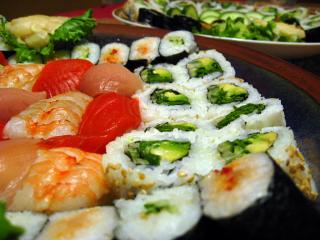This briefing on the militarization of space is very interesting. It is especially good insofar as it describes the special situation of the United States in relation to space and warfare, the consequences of the recent Chinese test of an anti-satellite missile, and some of the practicalities involved in tracking space debris and keeping satellites away from it.
Category: Science
New discoveries, the scientific method, and all matters relating to the scientific study of the physical world
A partial defence of carbon offsets
Everybody compares carbon offsets with the indulgences of the medieval Catholic Church. Indeed, a good number of people seem to treat the comparison as the decisive point against them. Offsets allow one person to ‘sin’ by flying or driving a big car, then pay for it by having someone else reduce emissions by a similar amount. While there is certainly potential for abuse, the real issue here is about the intuitive sense of fairness people possess.
Obviously, if someone buys an offset that produces no real reduction in emissions, they have been bilked and the climate has suffered. There are plenty of cases of dubious offsets, including all those based around planting trees. Furthermore, it is necessary not only for the sale of the offset to lead to reduced emissions: it must lead to a reduction of emissions equivalent to the face value of the offset and, crucially, these must consist entirely of reductions that would not otherwise occur. The perfect offset is something like this: (a) a farm releases large amounts of methane, a powerful greenhouse gas (b) in the normal run of things, the farm would have no incentive to stop doing so (c) the sale of offsets changes the economics of the situation, making it most economically efficient to capture the methane, perhaps using it to generate electricity (d) this produces a quantity of real and verifiable reductions that can be sold at the marginal cost of capturing the methane.
In this situation, the argument of ineffectiveness does not apply. What we are left with is the offence against fairness – allowing one person to ‘take more than their share.’ While there is intuitive force behind this position, I don’t think it is very convincing. While it would be better to both moderate one’s consumption and help others to do so, it does seem less objectionable to emit and purchase credible offsets than to emit and simply ignore the consequences of your actions. The critical difference between offsets and indulgences is that offsets (when used properly) actually have a mitigating effect on total greenhouse gas emissions; indulgences never did anything at all, except raise money for those selling them and the ire of those opposed.
The Omnivore’s Dilemma
Michael Pollan‘s superb book tells the stories of four meals and the processes through which they came to exist. At one extreme is a meal of McDonald’s cheeseburgers, eaten in a moving car; at the other, a cooked wild boar he hunted, accompanied by things grown or gathered. Pollan also considers two types of pastoral food systems: one on a mass scale intended to serve the consumer market for organic foods and a truly pastoral farm centred around grass feeding, healthy animal interactions, and sustainability. His descriptions of the four, and comparisons between them, provide lots of interesting new information, and fodder for political and ethical consideration.
Among these, the industrial food chain and the grass-fed pastoral are the most interesting. Each is a demonstration of human ingenuity, with the former representing the sheer efficiency that can be achieved through aggressive specialization and disregard for animal welfare and environmental effects and the latter demonstrating how people, animals, and plants can interact in a much more ethical and sustainable way, albeit only on a relatively small scale. The account of Polyface Farm – the small-scale pastoral operation run by Joel Salatin – is genuinely touching at times, as well as startling in contrast to the industrial cattle feeding and killing operations Pollan describes. While the book heaps praise on the operation, it also recognizes the limitations inherent: we cannot live in cities like New York and get our food from such establishments, nor can the big stores most people shop at manage to deal with thousands of such small suppliers. Unless you are willing to go back to a pre-urban phase for humanity, the industrial organic chain may be the best that is possible.
Pollan’s book is packed with fascinating information on everything from the chemistry of producing processed foods from corn to some unusual theories he learned from mushroom gatherers. Regardless of your present position on food, reading it will make you better informed and leave you with a lot to contemplate.
Arguably, the book is at its weakest when it comes to ethics. Pollan rightly heaps criticism on factory farms, but seems to pre-judge the overall rightness of eating meat. Some of his arguments against vegetarianism and veganism – such as that more animals are killed in fields growing vegetables than in slaughterhouses – are simply silly. No sensible system of ethics considers it equivalent to kill a grasshopper and to kill a pig. I also think that he places too much emphasis on the relevance of whether an animal anticipates death or not. I don’t see how the inability of animals to “see is coming” makes their deaths qualitatively different from those of human beings.
That said, his arguments are generally coherent and certainly bear consideration. He never explicitly spells out the wrongness of eating industrial meat, though it is clear that his implicit argument is based around the conditions under which the animals live, rather than the fact of killing them. This is a sensible position and he is right to contrast Polyface farm with industrial farms on the basis of how they allow or do not allow animals to express their “characteristic forms of life.” Rather than press his argument to a conclusion, he abandons his consideration in a bout of fantasy: talking about how much better the treatment and slaughter of animals would be if farms and slaughterhouses had glass walls.
I highly recommend this book to almost everyone. Modern life is very effective at concealing the nature and origin of what we are eating. This book helps to pull back the veil to some extent. It is also a reflection of the ever-increasing politicization of food. What you choose to eat is an important signal of your ethical and political views, to be judged accordingly by others. Whatever position you end up taking, it will be better informed and illustrated if you take the time to consider Pollan’s thoughts and experiences.
For my part, the book has convinced me that I should strictly limit or abandon the consumption of eggs. His description of egg operations is especially chilling and supports his assertion that: “What you see when you look is the cruelty – and the blindness to cruelty – required to produce eggs that can be sold for seventy-nine cents a dozen.” Other resolutions stemming from reading this book include to try eating more types of mushrooms, improve my cooking generally, and remember that under no circumstances should one accept an invitation to collect abalone in California.
Costly cod
If you want evidence of serious overfishing, look no further than Billingsgate Fish Market in London. Apparently, the price of a kilogram of cod has increased from £6 (C$11.87) four years ago to £30 (C$59.36) today. This is despite how fish is being brought in from ever-father away, concealing the degree to which local waters have been depleted.
Since 2000, cod has been considered an endangered species by the World Wide Fund for Nature. According to one of their reports, the global cod catch has fallen by 70% during the past thirty years and the fish could be commercially extinct as soon as 2020. The WWF report claims that:
[T]he world’s cod fisheries are disappearing fast, with a global catch that has declined from 3.1 million tonnes in 1970 to 950,000 tonnes in 2000. In the North American cod fishery, the catch has declined by 90 per cent since the early 1980s, while in European waters, the catch of the North Sea cod is now just 25 per cent of what it was 15 years ago.
This is consistent with the study in Science by Worm et al. that projected “the global collapse of all taxa currently fished by the mid–21st century.”
E. Coli and the acid rumen
This blog has previously considered the relationship between antibiotic resistant bacteria and factory farming. Recently, I learned about another way in which industrial meat production is breeding microbes that kill humans all the more efficiently. This one has to do with the acidity of our stomachs, one of the ways in which our bodies protect themselves from microorganisms living in the food we eat.
A cow living on a diet of grass has a rumen with a neutral pH. The rumen is the ‘first stomach’ of grass eating animals. Inside, bacteria help to ferment undigestible grass into material the cow’s body can process. Along with these digestive bacteria, many other kinds are present. One sort – Escherichia coli – kills humans by releasing toxins that destroy the kidneys. ‘Normal’ E. Coli, of the sort found in cows since the 1980s, cannot tolerate an acidic environment. As such, our stomachs are pretty good at killing it and thus keeping it from killing us.
A cow in a factory farm does not eat grass. The corn it eats creates an acidic environment in the rumen. This makes the cows ill, while also helping to breed E. Coli that can survive passage through acidic human stomachs. Now, about 40% of feedlot cows have E. Coli in their rumens. Feeding them grass or hay for a few days before slaughtering reduces the number of E. Coli in the animal’s digestive tract by about 80%, but factory farms do not do this. Instead, they try to prevent E. Coli outbreaks through irradiation.
Just another way in which industrial meat farming perverts nature and threatens human health.
[Update: 22 January 2010] Apparently, new research has called this hypothesis about diet and e. coli into question: “different set of findings emerged to indicate that this particular strain did not, in fact, behave like other strains of E. coli found in cattle guts. Most importantly (in terms of consumer safety), scientists showed in a half-dozen studies that grass-fed cows do become colonized with E. coli O157:H7 at rates nearly the same as grain-fed cattle. An Australian study actually found a higher prevalence of O157:H7 in the feces of grass-fed rather than grain-fed cows. The effect postulated (and widely publicized) in the 1998 Science report—that grain-fed, acidic intestines induced the colonization of acid-resistant E. coli—did not apply to the very strain of bacteria that was triggering all the recalls.”
Fissure in the Beaufort ice pack
During the past month, a massive piece of ice has broken off west of Banks Island, in the Canadian Arctic. This picture shows the area in question, while this animation from the US National Oceanic and Atmospheric Administration. The split left open water in the Bering Strait for 45 days. At the same time as the fissure, there was an unusual 45 day period of open water in the Bering Strait.
For a sense of scale, here is a map showing Banks Island in relation to the rest of Canada. While one event of this kind cannot be understood without comparison to what is happening in other areas and what has happened at other times, it is a reminder of the dynamic character of the polar icecap, even in the middle of winter. According to NOAA’s 2007 Arctic Report Card, anomolously high temperatures are yielding “relatively younger, thinner ice cover” which is “intrinsically more susceptible to the effects of atmospheric and oceanic forcing.”
It will be fascinating to see what happens the the icecap next summer: specifically, how the level of ice cover will compare to the shocking minimum in the summer of 2007.
[Correction: 15 January 2008] The open water in the Bering Sea is unrelated to this fissure, though both took place at the same time. Both pieces of information are listed in this report from the Canadian Ice Service.
Canada’s nuclear waste
After being removed from a reactor, nuclear fuel is both too radioactive and too physically hot to be reprocessed or placed in dry storage. As such, it is kept in cooling pools for a period of five to six years. Given the absence of long-term geologic storage facilities, all of Canada’s high level waste is currently in cooling pools or on-site dry cask storage. On a per-capita basis, Canada produces more high level nuclear waste than any other state – a total of 1,300 tonnes in 2001.
Canada currently has eleven nuclear waste storage facilities. Among these, one is in the process of decommissioning and six contain high level waste. Four sites have waste in dry storage casks: Darlington, Bruce, Pickering, Gentilly, and Point Lepreau. Other facilities include spent fuel pools. According to the Canadian Nuclear Safety Commission (CNSC), all Canadian wastes are currently in ‘storage’ defined as: “a short-term management technique that requires human intervention for maintenance and security and allows for recovery of the waste.”
In 2002, a major review of waste disposal options was undertaken by the Nuclear Waste Management Organization (NWMO). Their final report – released in November 2005 – endorsed a system of “Adaptive Phased Management” employing both interim shallow storage and deep geological storage, with the possibility of future recovery of materials. Such recovery would be motivated either by concerns about leakage potential or a desire to process the fuel into something useful. The NWMO is currently engaged in a process of site selection, intended to lead eventually to a National Nuclear Waste Repository.
The nuclear waste problem
From both an environmental and public support standpoint, the generation of nuclear waste is one of the largest drawbacks of nuclear fission as a power source. Just as the emission of greenhouse gasses threatens future generations with harmful ecological outcomes, the production of nuclear wastes at all stages in the fuel cycle presents risks to those alive in the present and to those who will be alive in the future, across a span of time not generally considered by human beings.
Wastes like Plutonium-239 remain highly dangerous for tens of millennia: a span roughly equivalent to the total historical record of human civilizations. Furthermore, while most states using nuclear power have declared an intention of creating geological repositories for wastes, no state has such a facility in operation. The decades-long story of the planned Yucca Mountain repository in the United States demonstrates some of the practical, political, and legal challenges to establishing such facilities in democratic societies.
Dry cask storage is not an acceptable long-term option, as suggested by its CNSC categorization as “a short-term management technique.” When dealing with wastes dangerous for millennia, it cannot be assumed that regular maintenance and inspection will continue. Storage systems must be ‘passively safe:’ able to contain the wastes they store for the full duration of their dangerous lives, without the need for active intervention from human beings. To date, no such facilities exist.
The sex life of corn
Corn, the key species in modern industrial agriculture, is completely incapable of reproducing itself in nature. The cobs that concentrate the seeds so nicely for us are not conducive to reproduction because, if planted, the corn grows so densely it dies. As such, the continued existence of Zea mays depends upon people continuing to divide the cobs and plant a portion of the seeds.
Corn is apparently a descendant of an earless grass called Teosinte. It is hard to overstate the consequences of a heavily mutated strain of Teosinte finding a species capable of closing a reproductive loop that would otherwise be open, leading to swift extinction.
The actual mechanics of corn reproduction are similarly odd. Male gametes are produced at the top of the plant, inside the flower-like tassel. At a certain time of year, these release the pollen that fertilizes the female gametes located in the cobs. It reaches them through single strands of silk (called styles) that run through the husk. When a grain of pollen comes into contact with one of these threads it divides into two identical cells. One of them tunnels through the strand into the kernel, a six to eight inch distance crossed in several hours. The other fuses with an egg to form an embryo, while the digger grows into the endosperm.
Another curious aspect of corn reproduction is that, because of seed hybridization (not genetic modification), every stalk of corn in a field is a clone of every other stalk. This is because the seeds came from inbred lines: each made to self-pollinate for several generations, eventually yielding batches of genetically identical seeds that farmers buy every year. They do this because the yield from the identical seeds is higher than that from the mixed generation that would follow it by a degree sufficient to justify the cost of buying seeds.
Such hybrid corn pushed yields from twenty bushels an acre – the amount managed by both Native Americans and farmers in the 1920s – to about two hundred bushels an acre. Given the degree to which we are all constructed more from corn than from any other source of materials (most of the meat, milk, and cheese we eat is ultimately made from corn, as are tons of processed foods), these remarkable processes of reproduction and agriculture deserve further study. For my part, I am reading Michael Pollan’s The Omnivore’s Dilemma. I am only 10% into it, but it has been quite fascinating so far.
Per capita emissions and fairness
As mentioned before, the Stern Review cites a figure of five gigatonnes of carbon dioxide equivalent as the quantity that can be sustainably absorbed by the planet each year. Given the present population of 6.6 billion people, that means our fair share is about 750kg of emissions each, per year. Right now, Canadian emissions are about 23 tonnes per person per year. They are highest in Alberta – 71 tonnes – and lowest in Quebec – 12 tonnes. Even in hydro-blessed Quebec, emissions are fifteen times too high.
Everybody knows that emissions in the developed world are too high. The average Australian emits 25.9 tonnes. For Americans it is 22.9; the nuclear-powered French emit 8.7 tonnes each. The European average is 10.6 tonnes per person, while North America weighs in at 23.1. One round-trip flight from New York to London produces the amount of greenhouse gas that one person can sustainably emit in three and a half years. These are not the kind of numbers that can be brought down with a few more wind turbines and hybrid cars; the energy basis of all states needs to be fundamentally altered, replacing a system where energy production and use are associated with greenhouse gas emissions with one where that is no longer the case.
What is less often acknowledged is that emissions in the developing world are already too high. Chinese per capita emissions are 3.9 tonnes, while those in India are 1.8. The list of countries by per-capita greenhouse gas emissions on Wikipedia shows three states where per-capita emissions are below 750kg: Comoros, Kiribati, and Uruguay. Even the average level of emissions for sub-Saharan Africa is almost six times above the sustainable level for our current world population.
And our world population is growing.
All this raises serious questions of fairness. Obviously, people in North America and Europe have been overshooting our sustainable level of emissions for a long time. Do developing countries have a similar right to overshoot? How are their rights affected by what we now know about climate change? If they do have a right to emit more than 750kg per person, does that mean people in developed states have a corresponding duty to emit less than that? Even if we emitted nothing at all, we couldn’t provide enough space within the sustainable carbon budget for them to emit as much as we are now.
The only option is for everyone to decarbonize. The developed world needs to lead the way, in order to show that it can be done. The developing world needs to acknowledge that the right to develop does not trump other forms of legal and ethical obligation: both to those alive now and to future generations. People in both developed and developing states may also want to reconsider their assumptions about the desirability of population growth. Spending a few centuries with people voluntarily restricting their fertility below the natural rate of replacement could do a lot to limit the magnitude of the ecological challenges we will face as a species.
Regression to the mean
All manner of diets, supplements, and vitamins compete for customers and adherents. Given that we are creatures of biochemistry, it is plausible that such chemicals will have effects on human health. Unfortunately, they do not act alone, but rather within a complex web of interactions: genes, environmental effects, physiological changes, etc, etc, etc. This makes it exceedingly difficult to isolate and prove the effect of any particular substance, especially given that the effect in different people, or the same person at different times, may differ.
The phenomenon of regression to the mean is especially confounding when it comes to individuals. We do not generally change our regimen of diet or supplements unless we perceive something to be wrong. We take vitamins when we feel ill, and analgesics when we have a headache. Given that both illness and headaches tend to rise to a peak and then taper off naturally, virtually any action we take in response will precede an improvement. It doesn’t matter if you spend a pile of money on remedies, spend your time praying, or simply sit still and wait for improvement. Regression to the mean is the product of basic statistical mathematics and isn’t caused by anything chemical or biological. It is tautological to say that things are normally like the mean and that, most of the time, situations far away from the mean will be replaced by those closer to it. While it is true that we can do things likely to shorten or lengthen the period of illness or discomfort, it is virtually impossible for an individual to know whether such an effect has occurred. Did taking those vitamins shorten or lengthen the cold? Did it have no effect? What about those glasses of red wine?
The only sensible course of action is to essentially disregard our own experiences, except in such cases where there is both a reasonably large body of evidence (ideally in the form of a large number of double-blind and controlled trials) and there is a plausible explanation for the method of action. Failure to employ such checks against hasty false reasoning leave us vulnerable to the pernicious human tendency to see causal relationships everywhere, without the scepticism that is critical in separating conjecture from an investigated hypothesis.






